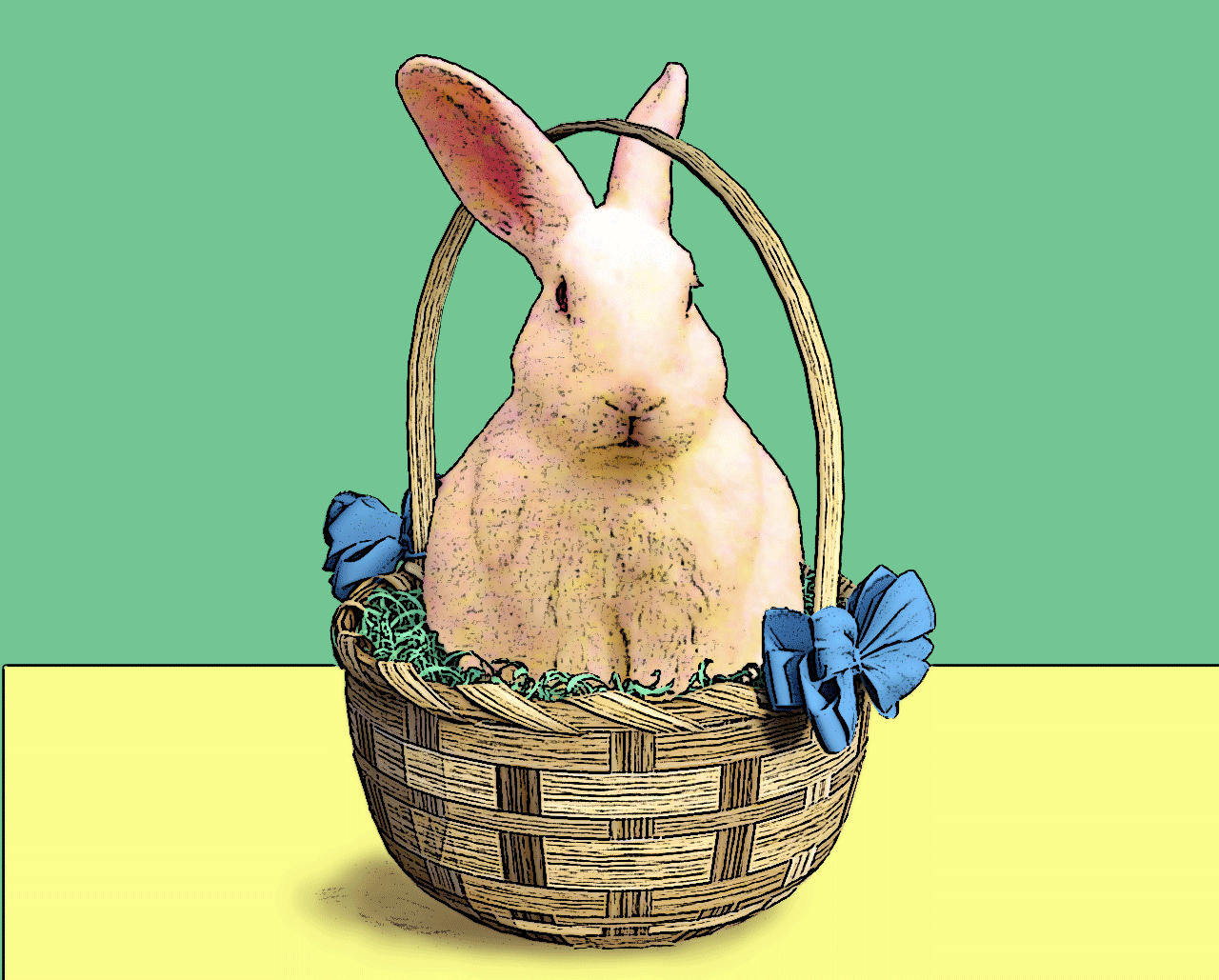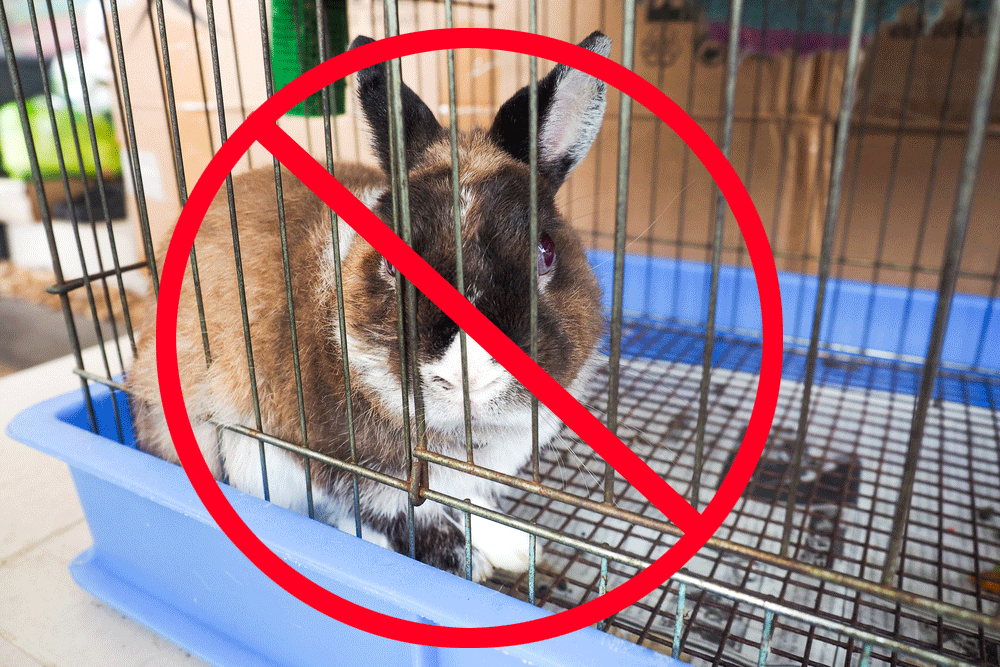
Easter time is here: Peak bunny time in the Western world! For me, the highlight is the irresistible selection of rabbit-themed housewares: Do I get the cute pink-eared coat hook or that lagomorph lamp with the carrot on/off switch? But others might be tempted to bring home a live long-eared love for the holiday.
Here’s the fantasy: a life of blissful cuddles on demand with a gentle, affectionate, and attentive furry companion.
The reality? A mix of comfort and chaos (“OK, who chewed on my checkbook?”), delight and drudgery (“I thought it was your turn to clean the litterbox!”). Whether the good outweighs the bad depends on whether a bunny is a good fit for your household and lifestyle.
So, should you get a pet rabbit?
Avoid Velveteen Rabbit Syndrome
Every parent has a story of that whiz-bang present they got their kids at great effort and expense — a gizmo that was played with for about a week, then promptly forgotten. As in The Velveteen Rabbit, this story repeats itself frequently with live bunnies, minus the happy ending.
Rabbits are lovely animals, but they’re not made for children. They’re delicate and easily injured if roughly or clumsily handled. Most don’t like being handled at all (though they do love gentle petting ).
Ignoring how the rabbit feels about being held typically results in scratches and bites, followed by tears. Kids won’t be thrilled when they find out they must let bunny hop away if he’s not in the mood to play right now and that they can’t carry him around like a stuffed toy. Rabbits can be fun to watch, but their antics are subtle and they require a quiet, predictable environment to feel comfortable enough to put on a show.
Therefore, most kids – and many adults – will quickly get bored or disillusioned with pet rabbits, unless they take the trouble to learn how to enjoy them.
The result: every year, scores of pet rabbits are surrendered. Worse still, many are just plain dumped outside to fend for themselves — which is both cruel and illegal (see side bar). Bunny abandonment peaks shortly after the Easter season ends.
 Is it OK to “set your rabbit free”?
Is it OK to “set your rabbit free”?
Because we commonly see bunnies outside our homes and in nearby open spaces, many people believe that rabbits can be released into the wild if keeping them as pets isn’t working out well.
This is absolutely not true.
Pet rabbits are descended from wild rabbits, just as dogs are descended from wolves, but that was centuries ago. Domesticated breeding has favored characteristics that make these rabbits more tame, and optimized them for beautiful appearance, or quantity of meat, rather than survival in wild places. Though they still retain vestiges of their wild cousins’ behavior, they don’t know how to:
- find the right foods
- defend themselves against predators
- dig warrens for shelter
Domesticated bunnies will become infected by diseases or infested with insects, fall victim to predators or get run over by cars, if their owner and protector decides to “set them free.”
In fact, abandoning your pet rabbit, like abandoning any animal, is considered animal neglect and is a crime. But most of all, it’s a death sentence for the bunny.
So think carefully before acquiring a rabbit, and if ever you must part company, please take your friend to a local shelter or rescue.
I’m not saying that parents with kids should never adopt a rabbit. They can. The key is to understand that they must be adopted as a family pet. They’ll require constant adult care and careful supervision of child-rabbit interaction.
Do You Have Room to Run?
 When I walk down the aisles of a typical pet store and see the cages they sell for rabbits, my heart just breaks. Many people rely on stores to educate them about what their new family member needs to thrive. But friends, that cage is no more appealing to your bunny than a jail cell would be to you.
When I walk down the aisles of a typical pet store and see the cages they sell for rabbits, my heart just breaks. Many people rely on stores to educate them about what their new family member needs to thrive. But friends, that cage is no more appealing to your bunny than a jail cell would be to you.
Leave aside for a moment the fact that rabbits are highly social creatures who get depressed when left alone, or that those wires he’s sitting on will cut into the bottoms of his tender feet. Just consider those powerful back legs.
Those lanky limbs were built to run, and as natural foragers, bunnies live to explore. Caging up a rabbit is no kinder than doing the same to a dog or cat. You can provide a hideaway as a safe spot with an open door, or contain your bun in a limited area (perhaps with a 12 square foot or larger exercise pen) if necessary when you’re not there to supervise. But your furry friend will need to get out in a larger area and scamper daily for his physical and mental well-being.
Ideally, he should have a 24×7 free-roaming territory full of interesting things to do and other friendly creatures for company. Not everyone can manage the ideal. But spending all day confined is no life for a rabbit. If all you can offer is a cage, don’t get a bunny.
Can You Prevent Tragedy?
While we’re on the topic of housing, a bun needs protection. What kinds of animals roam around outside your house? (Or inside it, for that matter?) Dogs and cats have innate predatory instincts, but even in urban areas, animals like raccoons, snakes, or birds of prey are also commonly found. Think they don’t live near you? Maybe they never come into your yard, but they’ve never smelled a pet rabbit in your yard. If they do, they’ll likely come for a visit that’s more than just social.
Mentioning you have pet rabbits weirdly prompts people to share horror stories on this subject. I’ve been regaled countless times by someone’s grisly tale of discovering the remains of their outdoor-dwelling pet rabbit. These are nice people; people who genuinely thought their outdoor enclosure was secure enough.
So, how will you keep your new best friend safe? I strongly recommend housing your rabbit indoors and making sure someone is watching attentively if he plays outside. If you don’t want an indoor bunny, it’s probably not a good pet for you.
Read the Fine Print:
You’ll have new chores to do. Daily duties will include:
- doling out lots of fresh hay and water
- providing fun activities like toys to chew on or food foraging
- socializing with your bun, particularly if you only have one. (A second rabbit helps cover those needs as well as having other health benefits.)
- And finally, cleaning out and refreshing litter boxes, if you use newspaper or hay alone as your filler. (If you use an absorbent, bacteria-controlling commercial litter you can reduce this to a once or twice a week task.)
Ain’t no short term thang. Rabbits often live ten years or longer. That means you’re committing to taking care of your lovable fluff-ball every day for a decade. If you were thinking a year or two, think again.
Warning: messes happen. Bunnies shed their fur 4 times per year and primarily eat hay. How fastidious are you about your home? Will it bother you if there’s a bit of fur wafting about or errant blades of hay lurking here and there?
Nothing to sneeze at. What about allergies in your household? During the five years when I was helping rabbits find homes, the most common reason I heard for returns was that someone in the home was allergic. No matter how much you love an animal, if having them around makes you physically miserable it’s unlikely to work out.
Rabbit nails and teeth never stop growing. Regular maintenance will be required — and it’ll be up-close and personal. Buns’ teeth can be kept in good shape by providing lots of chew-friendly materials like hay, cardboard, and wood. You’ll want to supply them copiously so your chisel-tooth doesn’t resort to using inappropriate items like your furniture or baseboards . But if whisker-face doesn’t get enough natural chewing to wear down his chompers, they can overgrow, causing a life-threatening medical crisis.
As for nails, most dog groomers won’t take bunnies, so that will also mean vet visits unless you learn to trim them yourself.
Vet bills for a sick rabbit can be substantial. In the rather pricey San Francisco Bay area where I live, the bill for a sick bunny can come to $500 or more, depending on how many tests are needed to diagnose the problem. Check with vets or rabbit owners in your local area. Make sure you can set aside the funds to cover this when it happens and/or invest in pet insurance.
Make Sure Everybody’s on Board
Keep in mind that bringing a new pet into your home is going to have an impact on everybody that lives there. I recommend you let everyone read this and talk it over. Make sure everybody’s okay with the idea and that you have a shared vision of how and where a bunny will live in your house before you go forward.
Still Want a Bunny?
When my husband overheard me counsel would-be adopters, he’d often wonder aloud how anyone could still want to adopt after hearing all my caveats and warnings. It’s not that I don’t want people to have pet rabbits – I just don’t want them to have bad surprises when they do! Both human and hare will be happier in the long term if you know what you’re getting into.
If you still think you’d like a pet rabbit, I recommend two things:
- Wait until after Easter
When the holiday glow fades, will the idea have the same appeal? Let some time pass and see if you’re still yearning for that long-eared love. - Adopt, don’t buy
There are countless wonderful bunnies waiting in municipal shelters and rescues around the world for someone to love them. Be a hero. Go save someone.
 The Fluffy Tail of This Blog Post
The Fluffy Tail of This Blog Post
I love having bunnies in my home and life. I don’t mind their little messes or having to look after their needs. But they’re not the best pet for everybody. I hope this information helps you make a good decision about whether a rabbit will work for you. If you have more questions, please add a comment – I respond to every comment on the blog. And if you do adopt a bunny, I wish you a long and happy time together.
Syl says:
A lot of good advice and unvarnished truths which should help avoid bad decisions!!
Melinda says:
Thanks Syl! I hope it’s helpful!